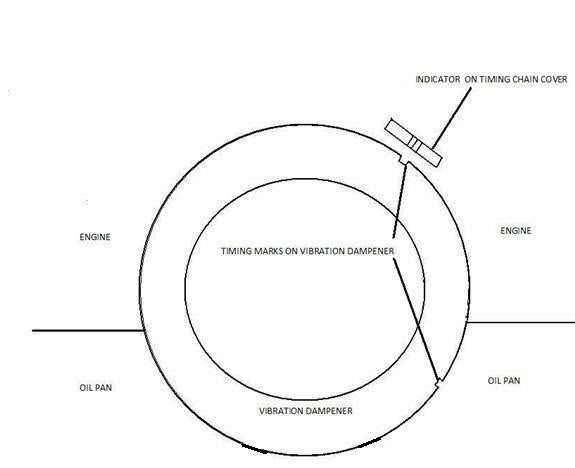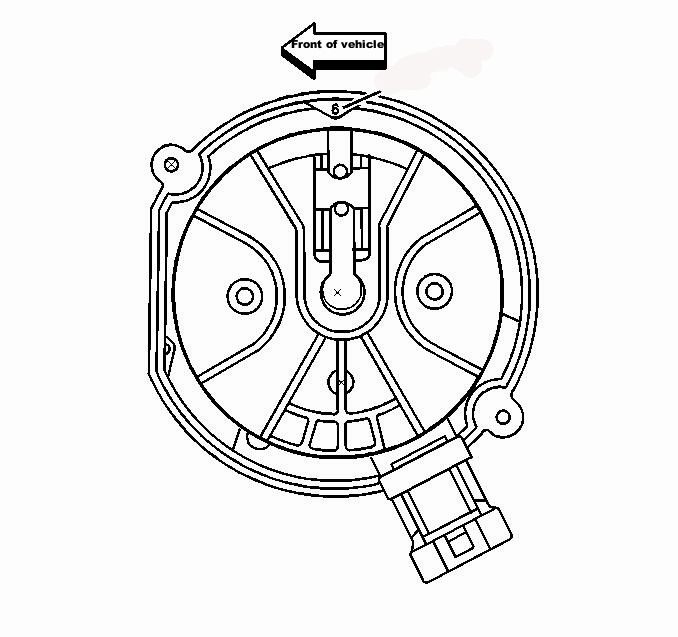02, 4.3, good pressure, good spark, no start
#1
so the other day, i took my truck through the car wash, brought it home and parked it. the next morning, i went to start the truck, cranked, no start. i started trouble shooting, fuel pressure is 65 when i switch the ignition on, drops to 58 and has been sitting for 20 mins or so and has dropped to 55. checked spark at all 6 cylinders, spark is good. swapped out the coil and icm with one i knew worked, no luck. sprayed starting fluid into the tb wile the wife cranked and about burnt the house down from the back fire, which makes me think its the timing, but ive owned the truck for 4 years and never touched the dist. is it possible for the timing to get jacked up by a freaking car wash? i havent replaced anything because everything ive tested has checked out ok. am i missing something? someone please point me in some kind of direction, i have no idea what could be going on. theres no codes and it ran just fine before the aforementioned car wash. thanks in advance for ANY input.
#2
Fuel pressure and leakdown are both good. From the backfire, you obviously have spark. This is exactly why you should NEVER use starting fluid on an internal combustion engine. Carb spray is much safer. If you have spark at all 6 cylinders while cranking, I would suspect a bad distributor cap & rotor. Use AC Delco only.
#3
Did you wash the engine?
Take the distributor cap off and wipe it out with a clean rag. Check the rotor button, check that the rotor screws are present and tight, check the rotor tip for carbon. Re-assemble and see if it starts.
Take the distributor cap off and wipe it out with a clean rag. Check the rotor button, check that the rotor screws are present and tight, check the rotor tip for carbon. Re-assemble and see if it starts.
#4
I pulled the cap, the rotor is a little warn, not enough IMO to cause an issue. Regardless, ac delco replacements are on the way. Did not wash the engine, one of those drive through washes for us lazy people. We've had fog yesterday and rain all day today, but the cap was still dry. I attempted to set tdc and check the position of the rotor to make sure it didn't jump timing, it wasn't exact, but the mark on the harmonic balancer positioned the rotor toward the #6 point and not #1. I read that the balancer has 2 timing marks, can anyone confirm or deny this? Or did my dist jump 180? Id verify it myself, but its late and my battery died. Any more input is highly appriciated. Soon as the cap and rotor show up ill throw it on and check back in. Thanks both of you for your input. BTW, starting fluid is awesome for this application. Because of the fluid and the resulting fire, I was able to conclude that I can in fact survive a minor heart attack That's good information to know. Thanks again
#5
The dampener does have two marks. The rotor must line up, within a few degrees, of the "6" on the distributor housing, AND the dampener marks must line up exactly as shown, at the same time:


Keep in mind that the distributor makes one revolution for each two revolutions of the crankshaft. So, it is quite possible you had #1 piston at TDC of the exhuast stroke, instead of the compression stroke, (if the rotor was 180 degrees off from the "6").


Keep in mind that the distributor makes one revolution for each two revolutions of the crankshaft. So, it is quite possible you had #1 piston at TDC of the exhuast stroke, instead of the compression stroke, (if the rotor was 180 degrees off from the "6").
Last edited by Captain Hook; 01-11-2014 at 09:51 PM.
#6
Good to know the heart can take a lick'n and keep on tick'n!!
Any chance that the car wash got water into the fuel somehow?
Have you checked spark to all six plugs?
Pulled any spark plugs out to see if fouled with fuel?
Still thinking something to do with moisture and spark. Rain/fog, high humidity and cracked spark plug wires would not be a good combination.
I do not think it is possible for an engine to jump 180° out of timing, one or two teeth on the timing gear, yes. How many miles on the engine?
Any chance that the car wash got water into the fuel somehow?
Have you checked spark to all six plugs?
Pulled any spark plugs out to see if fouled with fuel?
Still thinking something to do with moisture and spark. Rain/fog, high humidity and cracked spark plug wires would not be a good combination.
I do not think it is possible for an engine to jump 180° out of timing, one or two teeth on the timing gear, yes. How many miles on the engine?
#7
thanks for the explination captain. If it weren't for pictures with directions with em, I'd never have graduated kindergarten.
Id say its a better possibility that the timing jumped than water getting into the tank. I had to drop it 4 times to put in/fix a fuel pump, I checked and rechecked every o ring and seal to make sure its not leaking
All six WIRES have spark, and I know that from my harbor freight spark tester, I have not yet pulled the plugs to check em, ill work on that tomorrow.
Ive been thinking it had something with the moisture as well, but when warm and dry in the saftey of the garage, same result. I figured the moisture caused the issue and now it just needs to be found and rectified.
But even if the timing jumped a tooth or two, I would think it would still run, just run like crap. Its got 109k, runs (or ran) like a champ.
Ill pull the plugs when the old lady isn't pestering me about our anniversary. Thanks for the input and ill report back with whatever results I get
Id say its a better possibility that the timing jumped than water getting into the tank. I had to drop it 4 times to put in/fix a fuel pump, I checked and rechecked every o ring and seal to make sure its not leaking
All six WIRES have spark, and I know that from my harbor freight spark tester, I have not yet pulled the plugs to check em, ill work on that tomorrow.
Ive been thinking it had something with the moisture as well, but when warm and dry in the saftey of the garage, same result. I figured the moisture caused the issue and now it just needs to be found and rectified.
But even if the timing jumped a tooth or two, I would think it would still run, just run like crap. Its got 109k, runs (or ran) like a champ.
Ill pull the plugs when the old lady isn't pestering me about our anniversary. Thanks for the input and ill report back with whatever results I get
#8
At 109K miles, I seriously doubt the chain jumped. 4.3's can easily go 250K+ miles without chain issues, even if you beat on 'em  You can check timing chain slack without any engine disassembly. By the amount of slack, you can make an educated guess if it jumped.
You can check timing chain slack without any engine disassembly. By the amount of slack, you can make an educated guess if it jumped.
 You can check timing chain slack without any engine disassembly. By the amount of slack, you can make an educated guess if it jumped.
You can check timing chain slack without any engine disassembly. By the amount of slack, you can make an educated guess if it jumped.
#9
when the situation is unknown, you have to take into account all possible situations that would limit the product to not produce the desired result. highly unlikely, but still possible. how, dare i ask, do you check the timing chain slack? i figured you had to take the timing cover off and eyeball it. im at the point that if the engine has to be torn down for any reason, im gonna pull the small block out of the 89 s10 sitting in storage and drop it in the blazer in question. ive been looking for an excuse to put a small block in it anyways. but if a $50 cap and rotor will save the 4.3, kinda no brainer
#10
In post #5, how close to the "6" was your rotor when the crank was lined up?
To check timing chain slack, manually rotate the crankshaft cockwise until the dampener lines are aligned with the index marks on the timing cover and oil pan gasket, just like you did above. Remove the distributor cap. Have an assistant watch/feel the rotor while you slowly turn the crankshaft counter clockwise. As soon as the rotor begins to move, stop turning the crankshaft. Measure how many degrees the crank moved. Any more than ~12 degrees, the chain could jump.
To check timing chain slack, manually rotate the crankshaft cockwise until the dampener lines are aligned with the index marks on the timing cover and oil pan gasket, just like you did above. Remove the distributor cap. Have an assistant watch/feel the rotor while you slowly turn the crankshaft counter clockwise. As soon as the rotor begins to move, stop turning the crankshaft. Measure how many degrees the crank moved. Any more than ~12 degrees, the chain could jump.



